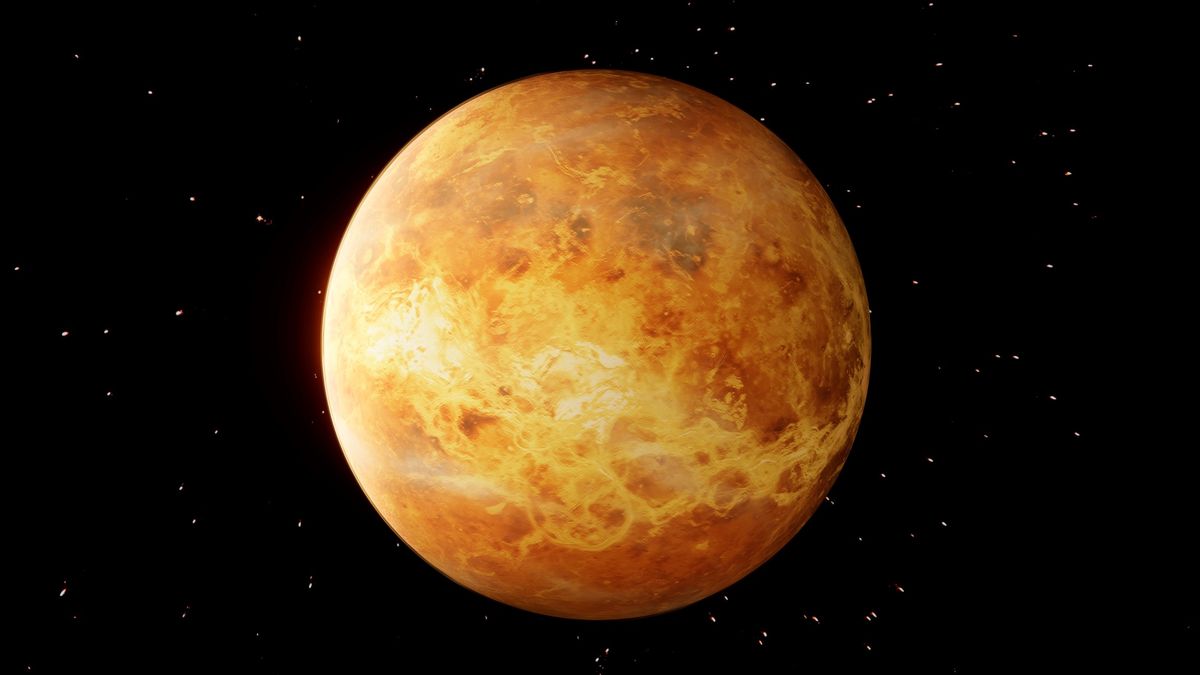
Ever wondered why Venus, our celestial neighbor, shines so brightly in the night sky? Well, you're about to find out! Venus, often dubbed the "Evening Star," has intrigued astronomers and sky gazers for centuries. Its luminous appearance and mysterious cloud-covered surface make it a fascinating subject for anyone curious about the cosmos. In this blog post, we'll unveil 20 captivating facts about Venus's appearance that will surely spark your interest. From its thick, toxic atmosphere to its slow, retrograde rotation, each fact is a piece of the puzzle in understanding why Venus looks the way it does. So, are you ready to get closer to uncovering the secrets of the second planet from the Sun? Let's dive into the intriguing world of Venus!
Key Takeaways:
- Venus is a unique planet with a backwards spin, extreme atmospheric pressure, and scorching temperatures. Its mysterious glow and volcanic history make it a fascinating subject for future exploration.
- Despite its beauty from Earth, Venus is a hostile world with a young, volcanic surface and a toxic atmosphere. Scientists are eager to study its secrets and understand its stark differences from Earth.
What Makes Venus Unique?
Venus, our neighboring planet, holds a special place in our solar system due to its distinctive characteristics. Often referred to as Earth's "sister planet" because of their similar size and mass, Venus presents a stark contrast in terms of its atmosphere and surface conditions.
-
Venus spins in the opposite direction to most planets in our solar system. This means on Venus, the sun rises in the west and sets in the east, opposite to what we experience on Earth.
-
It has the densest atmosphere of the four terrestrial planets, consisting mainly of carbon dioxide, with clouds of sulfuric acid, making it uninhabitable.
The Surface of Venus
The surface of Venus is hidden beneath a thick layer of clouds, but thanks to radar mapping, we've uncovered some of its secrets.
-
Venus's surface is relatively young geologically, estimated to be 300-600 million years old. This suggests a history of significant volcanic activity.
-
There are more than 1,600 major volcanoes on Venus, but none are known to be erupting currently. The planet's surface shows signs of extensive volcanic flows.
-
The highest mountain on Venus, Maxwell Montes, is about 11 kilometers high, making it nearly as tall as Mount Everest.
Venus's Atmospheric Conditions
The atmosphere of Venus is one of its most fascinating and hostile features.
-
Atmospheric pressure on Venus is 92 times that of Earth's, equivalent to being nearly 1 kilometer underwater on Earth.
-
Temperatures on Venus can reach up to 465 degrees Celsius (869 degrees Fahrenheit), hot enough to melt lead.
-
Winds in the upper atmosphere can reach speeds of up to 360 kilometers per hour (224 miles per hour), circling the planet every four to five Earth days.
The Color and Light of Venus
Venus's appearance from space and Earth has intrigued humans for centuries.
-
From Earth, Venus is one of the brightest objects in the sky due to its dense atmosphere reflecting sunlight.
-
The clouds of Venus contain droplets of sulfuric acid, giving the planet a bright yellow-white appearance.
-
At times, Venus is visible to the naked eye during the day, making it one of only five planets which can be seen without the aid of telescopes or binoculars.
Phases and Transits of Venus
Just like the Moon, Venus goes through a series of phases.
-
As it orbits the Sun, Venus exhibits phases from crescent to full and back again, visible through a small telescope or high-powered binoculars.
-
Transits of Venus across the face of the Sun are rare, occurring in a pattern that repeats every 243 years, with pairs of transits eight years apart.
The Mysterious Glow of Venus
Venus's night side has revealed surprises to astronomers.
-
Astronomers have detected a faint glow emanating from Venus's night side, a phenomenon caused by the interaction of solar particles and the planet's atmosphere.
-
This glow helps scientists study the composition and dynamics of Venus's atmosphere, providing clues about its weather patterns and the forces at work.
Venus's Role in Culture and Science Fiction
Venus has captured the imagination of many cultures and science fiction writers.
-
In Roman mythology, Venus was the goddess of love and beauty, reflecting the planet's brilliance in the night sky.
-
Science fiction has often depicted Venus as a tropical paradise or a swampy, dinosaur-infested jungle, before space probes revealed its true, inhospitable nature.
Future Missions to Venus
Interest in exploring Venus further has not waned.
-
Several space agencies have proposed missions to Venus to study its surface and atmosphere more closely, aiming to understand its geology, climate, and potential for past habitability.
-
The European Space Agency's Venus Express, in orbit from 2006 to 2014, provided valuable data on Venus's atmosphere and weather patterns.
-
NASA's proposed VERITAS mission aims to map Venus's surface in high resolution, shedding light on its geological history and investigating why it developed so differently from Earth.
A Final Glimpse at Venus
Venus, often dubbed Earth's twin, holds mysteries and wonders that continue to captivate us. From its thick, toxic atmosphere to its scorching surface temperatures, this planet is a testament to the diverse conditions that exist within our solar system. Its retrograde rotation and dense clouds reflect sunlight, making Venus the brightest natural object in the night sky, aside from the Moon. Understanding Venus's appearance and characteristics not only enriches our knowledge of planetary science but also highlights the uniqueness of Earth's environment. As we've journeyed through these 20 fascinating facts, it's clear that Venus offers invaluable insights into the workings of planets both within our solar system and beyond. So, next time you gaze up at the night sky, remember the intriguing world of Venus, shining brightly and holding secrets yet to be uncovered.
Frequently Asked Questions
Was this page helpful?
Our commitment to delivering trustworthy and engaging content is at the heart of what we do. Each fact on our site is contributed by real users like you, bringing a wealth of diverse insights and information. To ensure the highest standards of accuracy and reliability, our dedicated editors meticulously review each submission. This process guarantees that the facts we share are not only fascinating but also credible. Trust in our commitment to quality and authenticity as you explore and learn with us.


